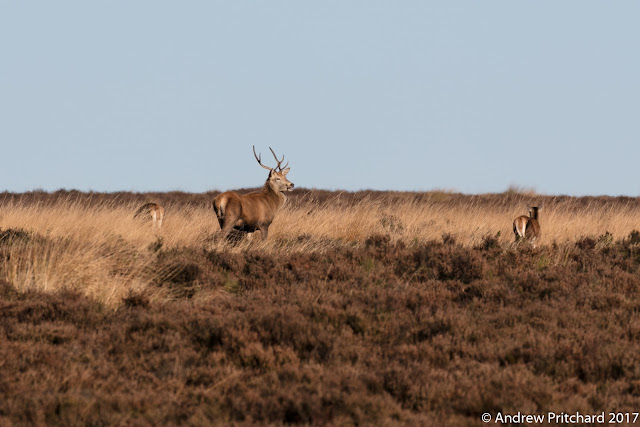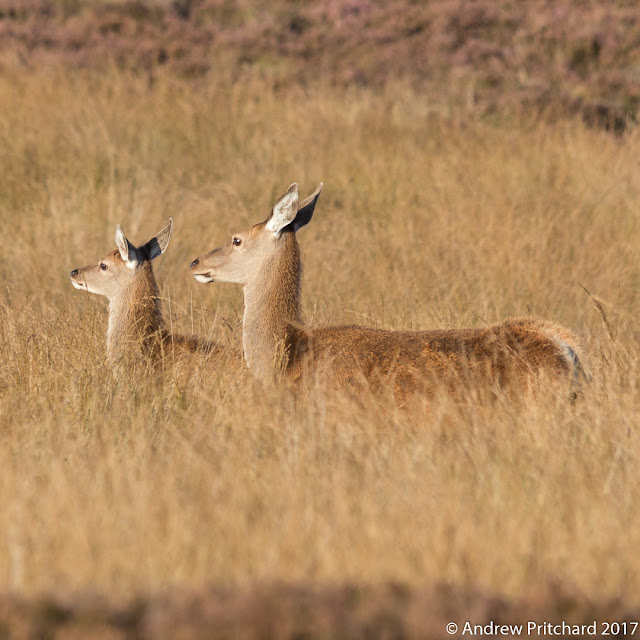December

Early morning on the moor. A group of deer are feeding on the long yellow grass on a moorland hillside. Not far from the footpath used by humans, dogs and other animals, they are quite used to seeing people walking nearby. Some things are too disturbing for them though. Ears pricked up. The feeding deer are interested in the people walking or jogging along the footpath. They look perturbed by something, perhaps the people nearby. Or maybe someone approaching? Disturbed by a jogging dog. The deer see a dog running along the nearby footpath with it's jogging owner. Only a small dog, but a dog off the lead can run anywhere it likes. In the wild, the main predator of large red deer would have been wolves, and probably still is in mainland Europe, where wolves can still be found in the wild. In England though, the nearest thing to a wolf is a pet dog! In search of different feeding grounds. Down on the flat area of grassland below the edge, a stag wanders, s...

